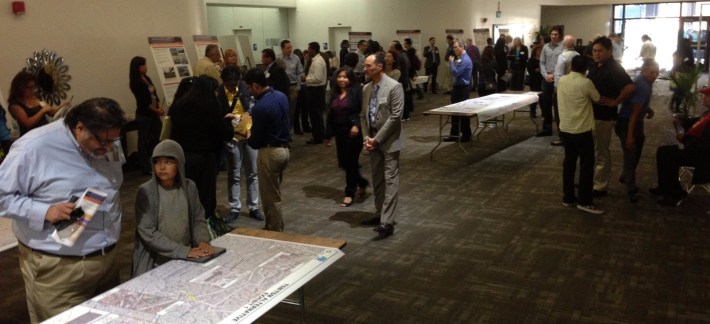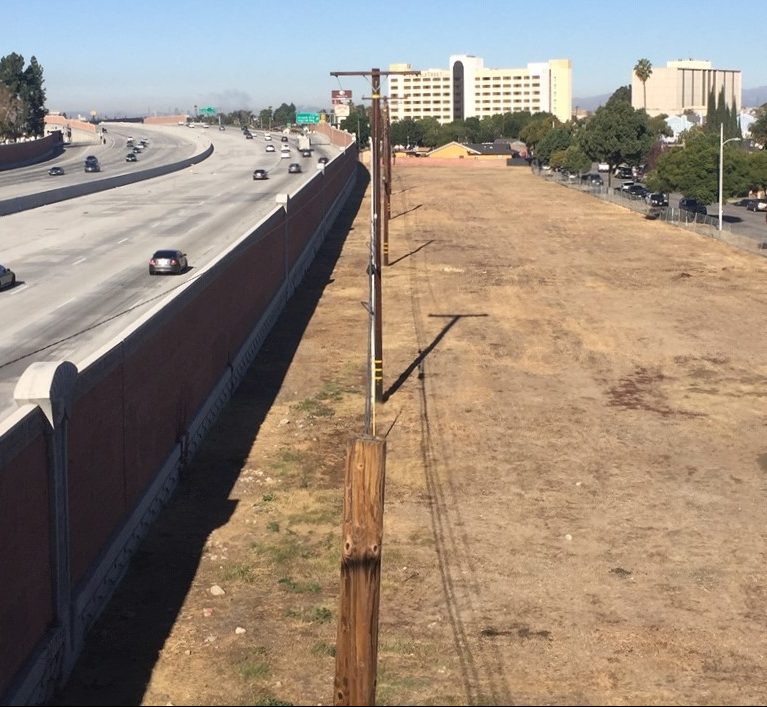
Smart people live in Pasadena. Some of them work for the Jet Propulsion Laboratory and send probes to Mars. Others spend their days figuring out quantum mechanics at Caltech. And still others dabble in transportation. A study group formed by Pasadena's Mayor Bill Bogaard and its City Manager has a smart idea in response to L.A. Metro's study to link the stub end of the 210 with the end of the 710: instead of closing this “gap” in our freeways, rip out the 210's stub along Pasadena Avenue.
That's just one recommendation in a recently completed white paper written by the Pasadena SR-710 Alternative Working Group (PWG), in response to Metro's Environmental Impact Report (EIR) on linking the 710 with the 210. Metro is holding a series of public meetings on its EIR. The next one is tonight at the Pasadena Convention Center.
The connection between the 710 and 210 would be 6.3 miles long and would include a 4.2-mile tunnel. It will cost between $5.7 billion and $3.2 billion, depending on options. Measure R, the 2008 ballot measure authorizing a sales tax to improve mobility, committed $780 million for the project.
During a 710 debate held at Cal State L.A., Barbara Messina, a Councilmember for the City of Alhambra, echoed Metro's studies when she called the “gap” the “missing link that does not allow our freeways to operate at maximum efficiency.” And if you believe that, I have a recently widened 405 to sell you. Messina said the tunnel will reduce pollution. “There's no way adding fifty-thousand cars can improve air quality,” said Michael Cacciotti, a Councilmember for the City of South Pasadena and another panelist, adding that the tunnel is an Eisenhower-era solution. “Why waste billions on a short little tunnel when you can connect the region with Light Rail?”
Indeed, the Metro study does present transit “alternatives.” But they don't seem credible.
Take the Bus Rapid Transit option. Outside rush hour, the “bus-only” lane reverts to a parking lane. It is dubious that such a watered-down BRT differs enough from the “no build” alternative to qualify.
The Light Rail option in the study is more tangible: it would run from the Fillmore Gold Line station to the East LA Civic Center Station at a cost of $2.4 billion. The segment in Pasadena would be underground, continuing on a viaduct for the trip through Alhambra. “Who wants to see an LRT three miles up in the air like the Disney Monorail!” said Messina at the Cal State L.A. debate. “LRT will devastate East L.A.”
Messina's hyperbole aside, Metro's rail alternative also raises questions.
For example, if they're going to spend the money on full grade-separation, why not use heavy rail, which is faster and carries more people? The argument for picking LRT is so trains can continue onto the existing Gold Line, which it intersects at both ends. But they won't connect. “There’s no interlining,” wrote a Metro official in an email. “The distance between the stations are about 400 feet at the south end and about 120 feet at the north end.” No surprise, with the awkward forced transfers and the subway price tag, the media is bashing the alternative.
Some speculate that Metro designed the transit options so the numbers favor the freeway tunnel.
Back to the PWG. It completed its white paper in March, which it presented to the Pasadena City Council last night.
One could title it “The anti-Messina.” It proposes filling the trench from the 210 freeway stub with dirt and using the land for bike lanes and other developments. It stipulates that any new trains must interline with the Gold Line. It also wants east-west transit between Pasadena, Glendale and Burbank along the 134 corridor: “These communities are in the center of a regional no-transit `V' between the Red Line traveling northwest and the Gold Line traveling northeast.”
The PWG group even wants to extend the Arroyo Seco bike path south to the Los Angeles River and along the river through downtown Los Angeles, incorporating it into the bike master plan and connecting it all the way to Long Beach. Yes, they want a 710 connection from Pasadena to the ports—but for bikes. The PWG paper embraces the “mobility choices that serve people,” rather than cars.
And that's not rocket science.
Want to get your comments into the EIR? Tonight, Tuesday, April 14, 2015, at the Pasadena Convention Center, 300 E. Green Street, there will be a Metro Meeting on the 710 where they will take public comment. That's a ten-minute walk from the Del Mar or Memorial Park stations on the Gold Line. The Map Viewing is from 5-6 p.m. and the hearing runs from 6-9 p.m. You can also leave comments via email.




